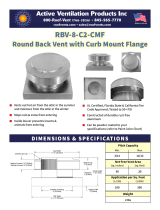
Table of Contents
Furnace Specifications ................................................................................................................. 4-5
Upflow/Horizontal Models....................................................................................................... 4
Downflow Models.................................................................................................................... 5
Capacities-Furnace Airflow Data ........................................................................................6-7
Safety Information............................................................................................................................. 8
Installation Requirements ............................................................................................................... 9
Supply Air Plenum Installation ..................................................................................................... 11
Installation on a Concrete Slab ...........................................................................................11
Installation on a Combustible Floor .................................................................................... 11
Venting and Combustion Air Requirements................................................................................ 12
General ................................................................................................................................. 12
Installation in an Unconfined Space................................................................................... 12
Installation in a Confined Space ......................................................................................... 13
Horizontal Furnace Installation ................................................................................... 13
Air From Inside............................................................................................................. 14
Outdoor Air Using Vertical Ducts ................................................................................ 14
Air Directly Through an Exterior Wall.......................................................................... 14
Outdoor Air Using A Crawl Space and Ventilated Attic............................................ 15
Outdoor Air Through Horizontal Ducts .......................................................................15
Venting Requirements.................................................................................................................... 15
General ................................................................................................................................. 15
Category I - Common Venting ............................................................................................. 16
Category III - Horizontal Venting......................................................................................... 17
Horizontal Venting for Upflow Models ........................................................................ 17
Horizontal Venting for Downflow Models ................................................................... 18
Horizontal Power Venting ....................................................................................................19
Vent Termination Clearance ................................................................................................ 20
Location of Outdoor Terminations....................................................................................... 21
Horizontal Installation .................................................................................................. 21
Flexible Vent Systems .......................................................................................................... 22
Circulating Air Supply .................................................................................................................... 22
General ................................................................................................................................. 22
Return Air .............................................................................................................................. 22
Gas Supply and Piping ..................................................................................................................23
General ................................................................................................................................. 23
Leak Check .....................................................................................................................
...... 23
Conversion ............................................................................................................................ 23
High-Altitude Application...................................................................................................... 24
Natural Gas High Altitude Conversion ................................................................................ 25
LP/Propane Gas Sea Level and High Altitude Conversion ..............................................25
Electrical Wiring ............................................................................................................................. 26
General ................................................................................................................................. 26
Line Voltage Wiring .............................................................................................................. 26
Low Voltage Wiring............................................................................................................... 27
Start-up & Adjustments .................................................................................................................. 28
General ................................................................................................................................. 28
Start-Up Procedures.............................................................................................................28
Verifying and Adjusting Firing Rate .................................................................................... 28
Verifying and Adjusting Temperature Rise ....................................................................28-30
Verifying Burner Operation .................................................................................................. 30
Verifying Operation of Supply Air Limit Switch ................................................................... 30
Description of Components ........................................................................................................... 30
Wiring Diagram ................................................................................................................................ 31
Maintenance..................................................................................................................................... 32
Vent System.......................................................................................................................... 32
Air Filter(s).............................................................................................................................. 32
Lubrication ............................................................................................................................33
Blower Compartment ............................................................................................................ 33
Heat Exchanger and Burner Maintenance......................................................................... 33
Cleaning of Flue Passages ................................................................................................. 33
Cleaning of Burners .............................................................................................................34
System Operation Information ...................................................................................................... 34
General ................................................................................................................................. 34
Sequence of Operation ....................................................................................................... 34
Heating Mode............................................................................................................... 34
Cooling Mode ............................................................................................................... 35
Fan Mode ..................................................................................................................... 35
Furnace Fails to Operate .....................................................................................................35
Twinning ................................................................................................................................36
Installation/Performance Checklist ............................................................................................. 36




















